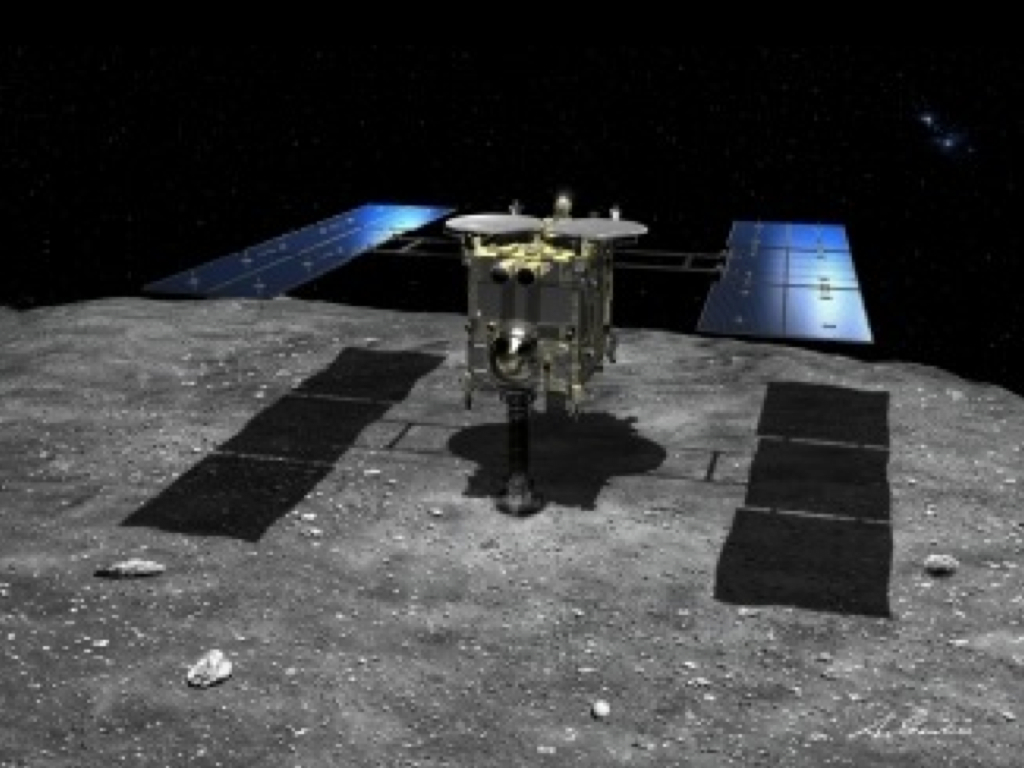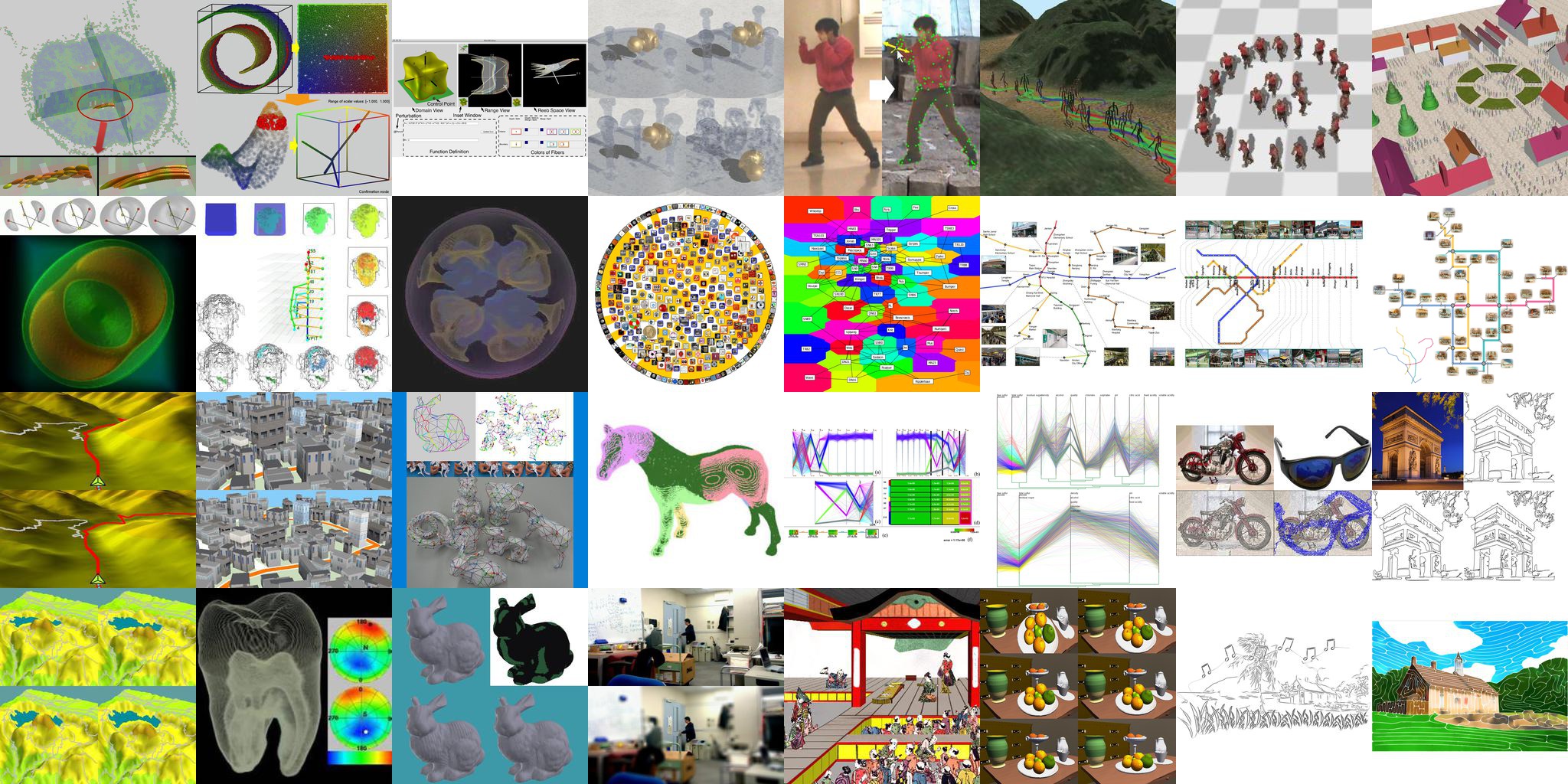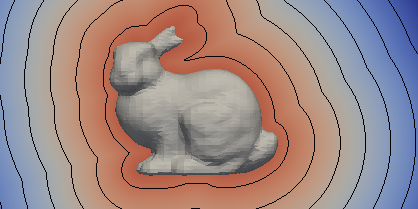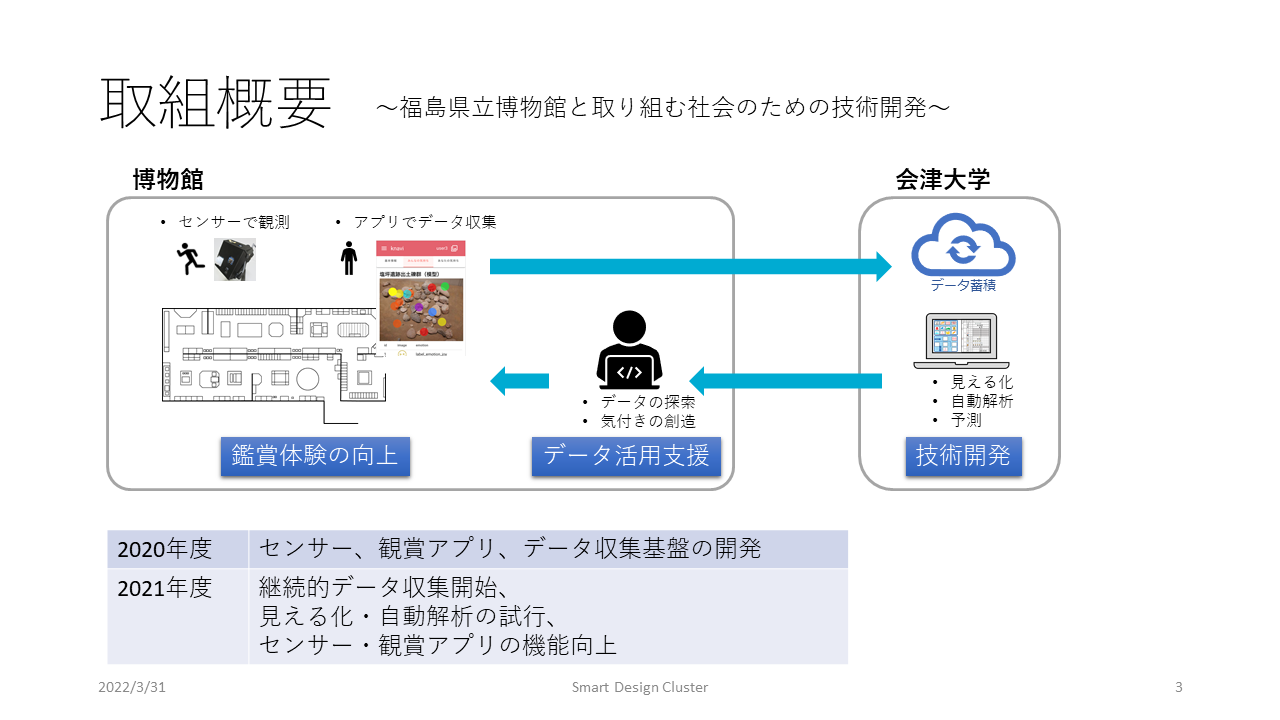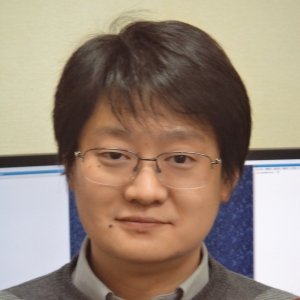
TAKAHASHI Shigeo
Professor
- Affiliation
- Department of Computer Science and Engineering/Division of Information Systems
- Title
- Professor
- shigeo@u-aizu.ac.jp
- Web site
- http://www.u-aizu.ac.jp/~shigeo
Education
- Courses - Undergraduate
- Introduction to Multimedia Systems, Compuer Graphics, Geometry for Visual Computing, Introduction to Topology
- Courses - Graduate
- 3D Computer Graphics and GPU Programming
Research
- Specialization
-
High performance computing
Computational science
Perceptual information processing
Computer Visualization and Graphics
- Educational Background, Biography
- 1992: Bachelor in Science (U Tokyo) 1994: M.S. in Computer Science (U Tokyo) 1997: Ph.D. in Computer Science (U Tokyo)
- Current Research Theme
- scientific visualization, information visualization, visual perception modeling, mathematical visualization, geospatial visualization, visual analytics, nonphotorealistic rendering
- Key Topic
- topological data visualization, map schematization, image abstraction, high-dimensional data visualization
- Affiliated Academic Society
- IEEE, ACM, EurographicsJSPS, IEICE, VSJ, JCA
Others
- Hobbies
- Listening to music, watching sports, watching shogi games, traveling
- School days' Dream
- Train/bus driver
- Current Dream
- Visualize the complexity in our mind
- Motto
- Your effort will pay off.
- Messages for Students
- Be serious about your study and research
Main research
- Asteroid Explorer Hayabusa2
-
Many members from the University of Aizu, in particular faculty members from CAIST/ARC-Space, have been involved with Hayabusa 2, the asteroid explorer launched by JAXA in 2014. Our University's members have been conducting research in connection with this project in anticipation of Hayabusa 2's arrival at the asteroid 162173 Ryugu in 2018, to be followed by its return to Earth in 2020. Specifically teams at the University have been engaged in developing observation instruments, which include the near infrared spectrometer installed on Hayabusa 2, and in developing analytic software that will model the shape of the asteroid based on data captured by the probe's observation instruments.
JAXA Hayabusa 2 project website
*Material from JAXA's digital archives has been used for the banner images, etc.
- Research on Computer Visualization
-
This research aims at formulating methods and algorithms for transforming data into visual information, in order to help users to understand the underlying features behind it.
- Shape modeling
-
The typical domains of application of shape modeling include: computer-aided design, architecture, design and rapid prototyping, mechanical engineering or medical image processing.
The usual methods or operations that can be performed include: acquisition from scanned data, conversion between representation, creation and modeling, deformation, repairing, optimization, animation, etc
The shapes studied are in general two or three dimensional, though it is possible to consider additional dimensions corresponding, for example, to the time (for time-dependent shapes) or internal attributes of the objects.
Shape modeling is dealing with the study of mathematical tools, data-structures and algorithms for the description of the shape of objects and the operations to be applied to them.
- Smart Museum
-
[Mission]
Role: Improve visitor experience at the Fukushima Museum
Target: Visitor support and exhibition design
Value: Improve visitor learning and knowledge acquisition
[Purpose]
Currently, it is difficult to obtain objective data on visitor’s behavior in viewing the exhibits that is necessary for evaluation/improvement.
Also, it is currently difficult to understand the visitor’s learning experience so as to provide necessary support.
To improve the situation, it is desired to be able to objectively grasp visitor’s behavior within the exhibit hall.
Furthermore, it is required to collect visitor’s learning experience without hindering their experiences.
Therefore, a system that objectively measures visitor behavior and supports curators for analysis and interpretation will be developed.
[Goal]
Visitor’s satisfaction in terms of learning improves.
[Scenario]
(1)Realize objective thorough measurement of visitor behavior.
(2)Develop devices/applications for visitors that encourages/induces appreciation of exhibits.
(3)Develop advanced computational methods to analyze and visualize visitor behavior.
(4)Develop a system for curators that encourages analyzing and interpreting the measured/computed visitor behavior.
(5)Develop a system to assist curators in designing exhibitions based on the analysis and interpretation.
Dissertation and Published Works
[1] Hsiang-Yun Wu, Shigeo Takahashi, Daichi Hirono, Masatoshi Arikawa, Chun-Cheng Lin, and Hsu-Chun Yen. Spatially Efficient Design of Annotated Metro Maps. Computer Graphics Forum, Vol. 32, No. 3, pp. 261-270, 2013. DOI: 10.1111/cgf.12113.
[2] Eunjung Ju, Myung Geol Choi, Minji Park, Jehee Lee, Kang Hoon Lee, and Shigeo Takahashi. Morphable Crowds. ACM Transactions on Graphics, Vol. 29, No. 5, 2010. Article No. 140, DOI: 10.1145/1866158.1866162
[3] Shigeo Takahashi, Issei Fujishiro, and Masato Okada. Applying Manifold Learning to Plotting Approximate Contour Trees. IEEE Transactions on Visualization and Computer Graphics, Vol. 15, No. 6, pp. 1185-1192, 2009. DOI: 10.1109/TVCG.2009.119
[4] Shigeo Takahashi, Kenichi Yoshida, Taesoo Kwon, Kang Hoon Lee, Jehee Lee, and Sung Yong Shin. Spectral-Based Group Formation Control. Computer Graphics Forum, Vol. 28, No. 2, pp. 639-648, 2009. DOI: 10.1111/j.1467-8659.2009.01404.x
[5] Taesoo Kwon, Kang Hoon Lee, Jehee Lee, and Shigeo Takahashi. Group Motion Editing. ACM Transactions on Graphics, Vol. 27, No. 3, 2008. Article No. 80, DOI: 10.1145/1360612.1360679
[6] Shigeo Takahashi, Kenichi Yoshida, Kenji Shimada, and Tomoyuki Nishita. Occlusion-Free Animation of Driving Routes for Car Navigation Systems. IEEE Transactions on Visualization and Computer Graphics, Vol. 12, No. 5, pp. 1141-1148, 2006. DOI: 10.1109/TVCG.2006.167
[7] Shigeo Takahashi, Issei Fujishiro, Yuriko Takeshima, and Tomoyuki Nishita. A Feature-Driven Approach to Locating Optimal Viewpoints for Volume Visualization. In Proceedings of IEEE Visualization 2005, pp. 495-502, Minneapolis, MN, USA, 2005. DOI: 10.1109/VISUAL.2005.1532834
[8] Shigeo Takahashi, Yuriko Takeshima, and Issei Fujishiro. Topological Volume Skeletonization and Its Application to Transfer Function Design. Graphical Models, Vol. 66, No. 1, pp. 22-49, 2004. DOI: 10.1016/j.gmod.2003.08.002
[9] Ryutarou Ohbuchi, Akio Mukaiyama, and Shigeo Takahashi. A Frequency-Domain Approach to Watermarking 3D Shapes. Computer Graphics Forum, Vol. 21, No. 3, pp. 373-382, 2002. DOI: 10.1111/1467-8659.t01-1-00597
[10] Shigeo Takahashi, Tetsuya Ikeda, Yoshihisa Shinagawa, Tosiyasu L. Kunii, and Minoru Ueda. Algorithms for Extracting Correct Critical Points and Constructing Topological Graphs from Discrete Geographical Elevation Data. Computer Graphics Forum, Vol. 14, No. 3, pp. 181-192, 1995. DOI: 10.1111/j.1467-8659.1995.cgf143 0181.x"



